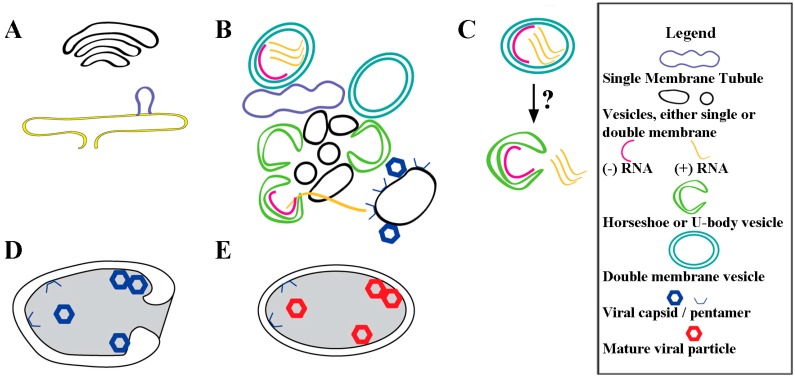Figure 4.
Virus-induced membrane remodeling and expansion for poliovirus replication. (A) As early as 2.5 hpi, lipid buds off the ER [52], producing structures comprised of mostly virally induced lipids [11]; (B) New and pre-existing cellular vesicles are dynamically remodeled [55] and invaginated from tubules into vesicles, and U-bodies, using a unique lipid composition and specific virus proteins (listed in Table 1 and Table 2). Only a fraction of the membranous structures are involved in active RNA replication within lumenal spaces. Throughout infection (+) RNA exits the replication factory, destined for translation or packaging. For virus assembly, (+) RNA interacts with membrane-associated capsid protein pentamers on membranes that are distinct from replication factory membranes [70]; (C) Possible mechanism by which closed DMVs transitions to U-body with gated lumen. These structures are visible at timepoints beginning 4 hpi and are believed to continue active replication; (D) Autophagosome-like vesicle formation engulfs immature virus particles. These vesicles have twice the diameter of replication vesicles [71], and we posit that these membranes are distinct from those in RNA replication factories, which are still present in the cell; (E) Acidification of the autophagosome-like vesicles produces mature virus particles [72].

